The inflammasome adaptor ASC regulates the function of adaptive immune cells by controlling Dock2-mediated Rac activation and actin polymerization
- PMID: 21892172
- PMCID: PMC3178750
- DOI: 10.1038/ni.2095
The inflammasome adaptor ASC regulates the function of adaptive immune cells by controlling Dock2-mediated Rac activation and actin polymerization
Abstract
The adaptor ASC contributes to innate immunity through the assembly of inflammasome complexes that activate the cysteine protease caspase-1. Here we demonstrate that ASC has an inflammasome-independent, cell-intrinsic role in cells of the adaptive immune response. ASC-deficient mice showed defective antigen presentation by dendritic cells (DCs) and lymphocyte migration due to impaired actin polymerization mediated by the small GTPase Rac. Genome-wide analysis showed that ASC, but not the cytoplasmic receptor NLRP3 or caspase-1, controlled the mRNA stability and expression of Dock2, a guanine nucleotide-exchange factor that mediates Rac-dependent signaling in cells of the immune response. Dock2-deficient DCs showed defective antigen uptake similar to that of ASC-deficient cells. Ectopic expression of Dock2 in ASC-deficient cells restored Rac-mediated actin polymerization, antigen uptake and chemotaxis. Thus, ASC shapes adaptive immunity independently of inflammasomes by modulating Dock2-dependent Rac activation and actin polymerization in DCs and lymphocytes.
Figures
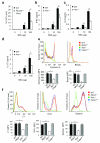
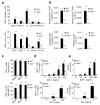
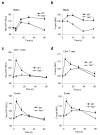
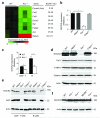
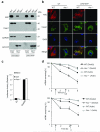
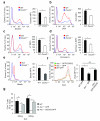
Comment in
-
ASCertaining cytoskeletal rearrangements in antigen presentation and migration.Nat Immunol. 2011 Sep 20;12(10):923-5. doi: 10.1038/ni.2114. Nat Immunol. 2011. PMID: 21934669
Similar articles
-
ASCertaining cytoskeletal rearrangements in antigen presentation and migration.Nat Immunol. 2011 Sep 20;12(10):923-5. doi: 10.1038/ni.2114. Nat Immunol. 2011. PMID: 21934669
-
DOCK2 regulates Rac activation and cytoskeletal reorganization through interaction with ELMO1.Blood. 2003 Oct 15;102(8):2948-50. doi: 10.1182/blood-2003-01-0173. Epub 2003 Jun 26. Blood. 2003. PMID: 12829596
-
DOCK2 is a Rac activator that regulates motility and polarity during neutrophil chemotaxis.J Cell Biol. 2006 Aug 28;174(5):647-52. doi: 10.1083/jcb.200602142. J Cell Biol. 2006. PMID: 16943182 Free PMC article.
-
Cell intrinsic roles of apoptosis-associated speck-like protein in regulating innate and adaptive immune responses.ScientificWorldJournal. 2011;11:2418-23. doi: 10.1100/2011/429192. Epub 2011 Dec 8. ScientificWorldJournal. 2011. PMID: 22194672 Free PMC article. Review.
-
The CDM protein DOCK2 in lymphocyte migration.Trends Cell Biol. 2002 Aug;12(8):368-73. doi: 10.1016/s0962-8924(02)02330-9. Trends Cell Biol. 2002. PMID: 12191913 Review.
Cited by
-
Significant role of IL-1 signaling, but limited role of inflammasome activation, in oviduct pathology during Chlamydia muridarum genital infection.J Immunol. 2012 Mar 15;188(6):2866-75. doi: 10.4049/jimmunol.1103461. Epub 2012 Feb 13. J Immunol. 2012. PMID: 22331066 Free PMC article.
-
Canonical Nlrp3 inflammasome links systemic low-grade inflammation to functional decline in aging.Cell Metab. 2013 Oct 1;18(4):519-32. doi: 10.1016/j.cmet.2013.09.010. Cell Metab. 2013. PMID: 24093676 Free PMC article.
-
Central and overlapping role of Cathepsin B and inflammasome adaptor ASC in antigen presenting function of human dendritic cells.Hum Immunol. 2012 Sep;73(9):871-8. doi: 10.1016/j.humimm.2012.06.008. Epub 2012 Jun 22. Hum Immunol. 2012. PMID: 22732093 Free PMC article.
-
DOCK2 confers immunity and intestinal colonization resistance to Citrobacter rodentium infection.Sci Rep. 2016 Jun 13;6:27814. doi: 10.1038/srep27814. Sci Rep. 2016. PMID: 27291827 Free PMC article.
-
Activation of Pyroptotic Cell Death Pathways in Cancer: An Alternative Therapeutic Approach.Transl Oncol. 2019 Jul;12(7):925-931. doi: 10.1016/j.tranon.2019.04.010. Epub 2019 May 11. Transl Oncol. 2019. PMID: 31085408 Free PMC article. Review.
References
-
- Bauer C, et al. Colitis induced in mice with dextran sulfate sodium (DSS) is mediated by the NLRP3 inflammasome. Gut. 2010;59:1192–1199. - PubMed
-
- Dupaul-Chicoine J, et al. Control of intestinal homeostasis, colitis, and colitis-associated colorectal cancer by the inflammatory caspases. Immunity. 2010;32:367–378. - PubMed
Publication types
MeSH terms
Substances
Associated data
- Actions
Grants and funding
LinkOut - more resources
Full Text Sources
Other Literature Sources
Molecular Biology Databases
Miscellaneous

